132 DVD-A / Pictures & Reflections
Pictures & Reflections
Maurice Ravel
Miroirs
Modest Mussorgsky
Pictures at an Exhibition
Markus Schirmer, piano
TACET Real Surround Sound / Moving Real Surround Sound
EAN/barcode: 4009850013235
Description
"This CD, which has been much praised for ist piano and musical quality, has now been published on Audio-DVD by Tacet. In two variants the listener can follow Schirmer’s succinct, impressive interpretations of the Russian cycle of pictures and reflections played on a remarkable Fazioli instrument. Ravel’s Miroirs are presented in "Tacet Real Surround Sound", the pictures are also in "Tacet Moving Real Surround Sound". Compared with the "normal" stereo Version (Tacet 132) the listener is put on the weather side, acoustically speaking, as if he or she was surrounded by the piano – not exactly a natural position […] But the result is the birth child of good sound engineering. […]" (Klassik-heute.de)
3 reviews for 132 DVD-A / Pictures & Reflections
You must be logged in to post a review.

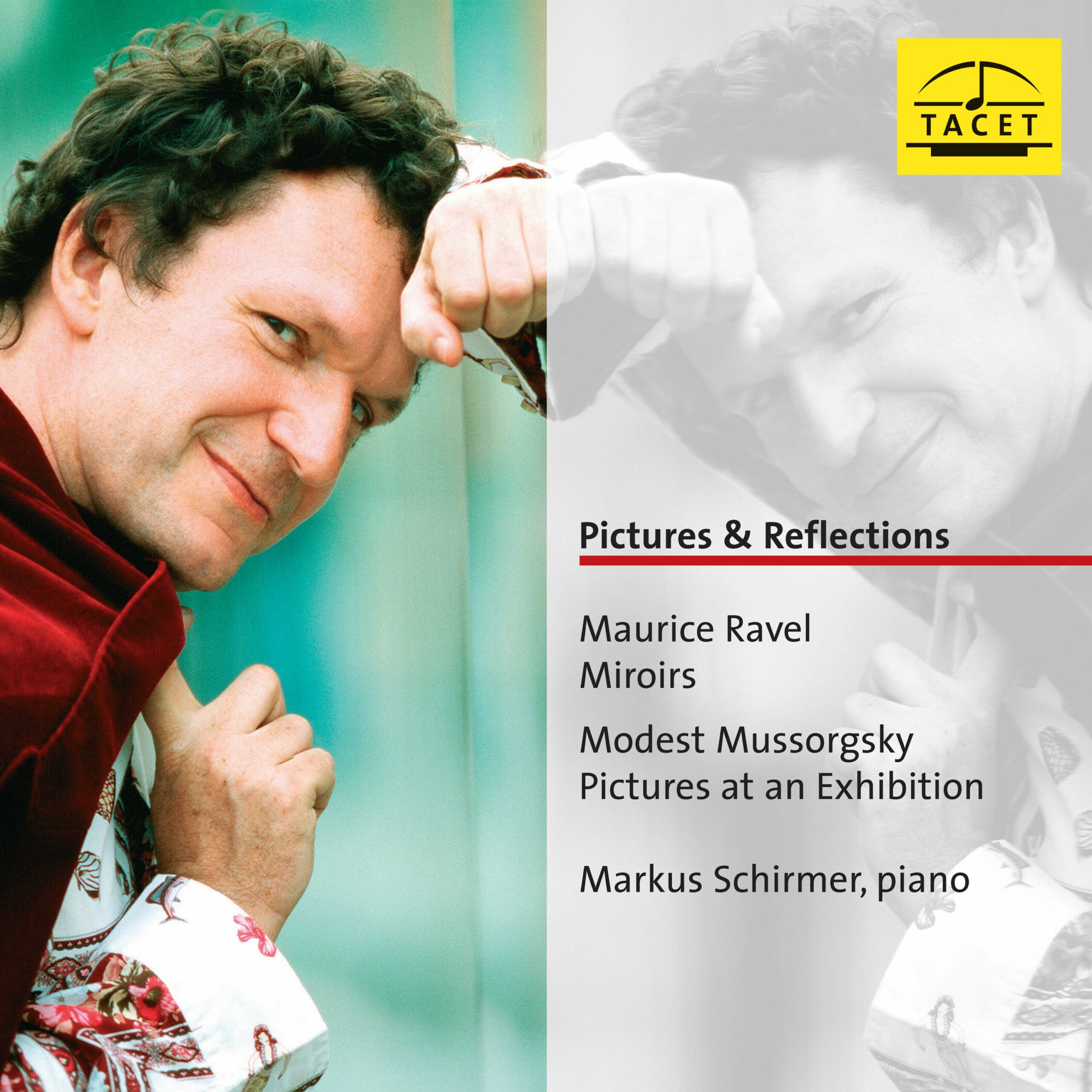
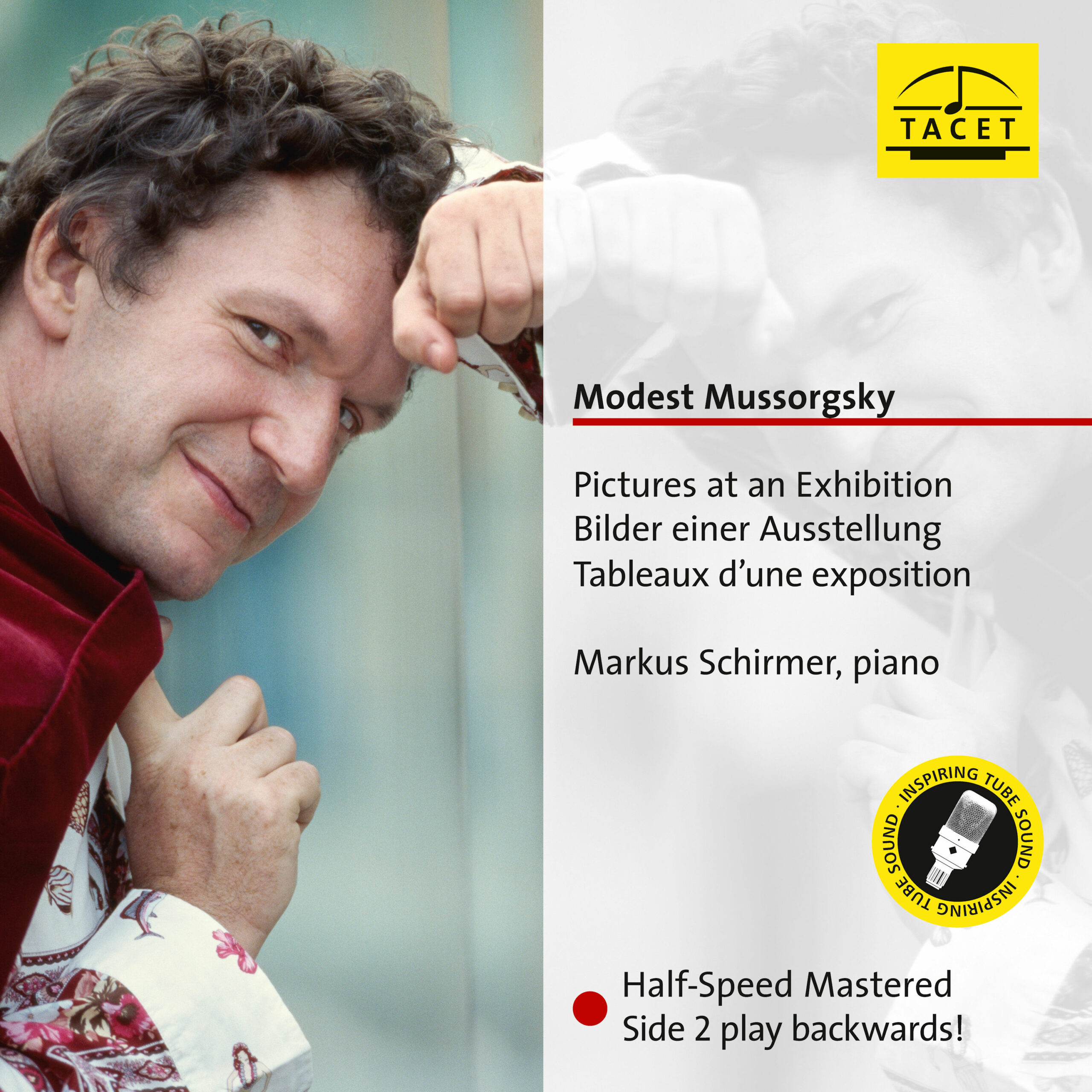
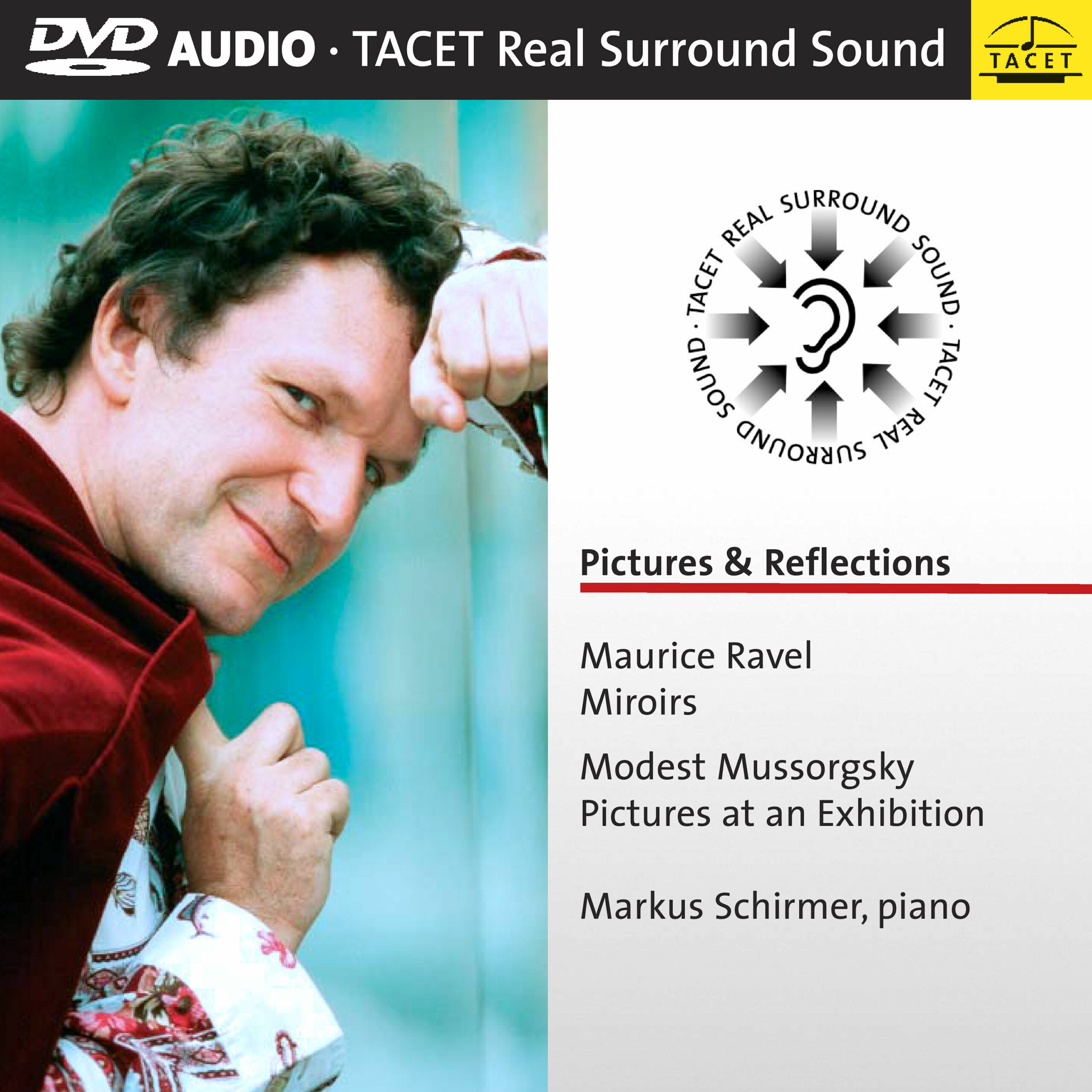
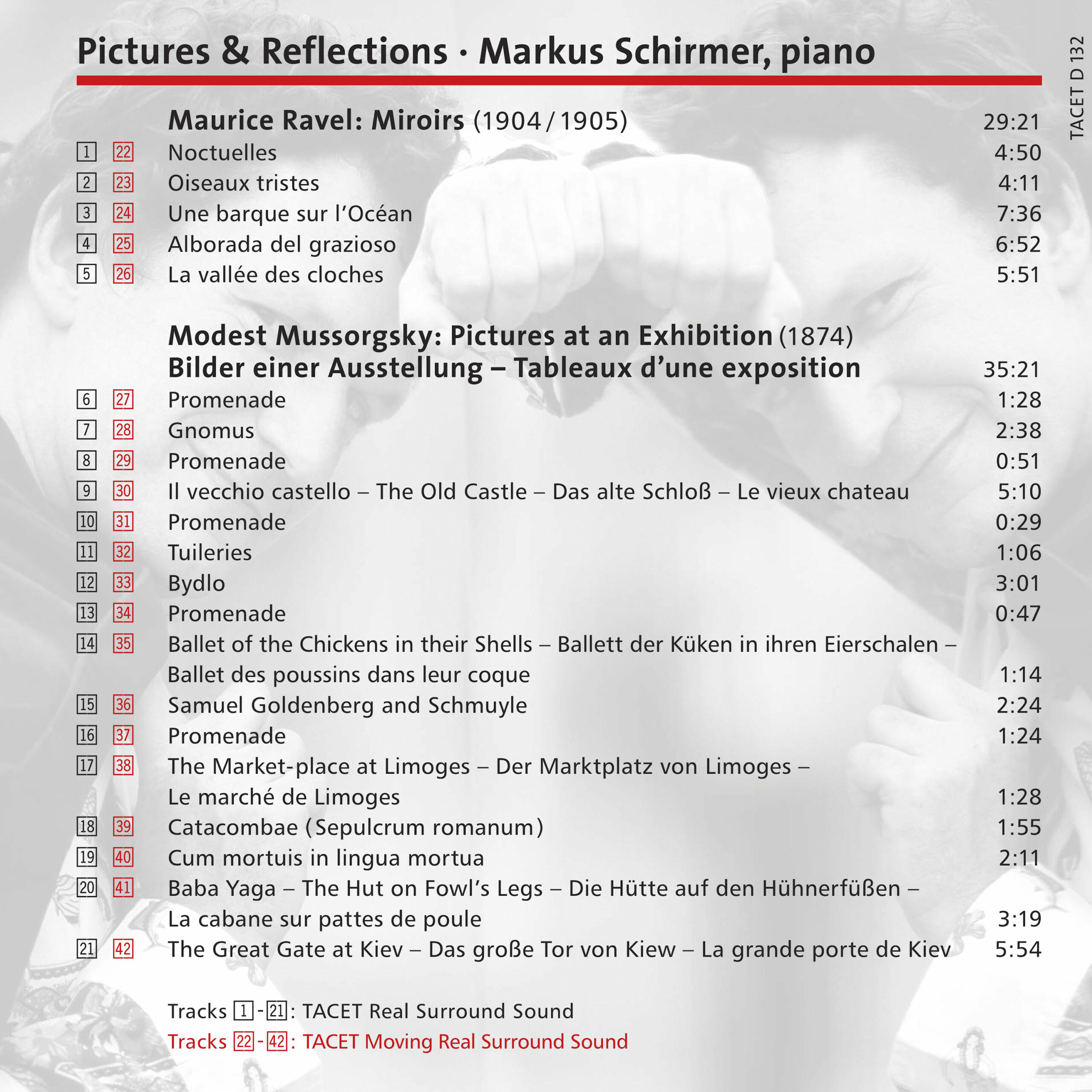
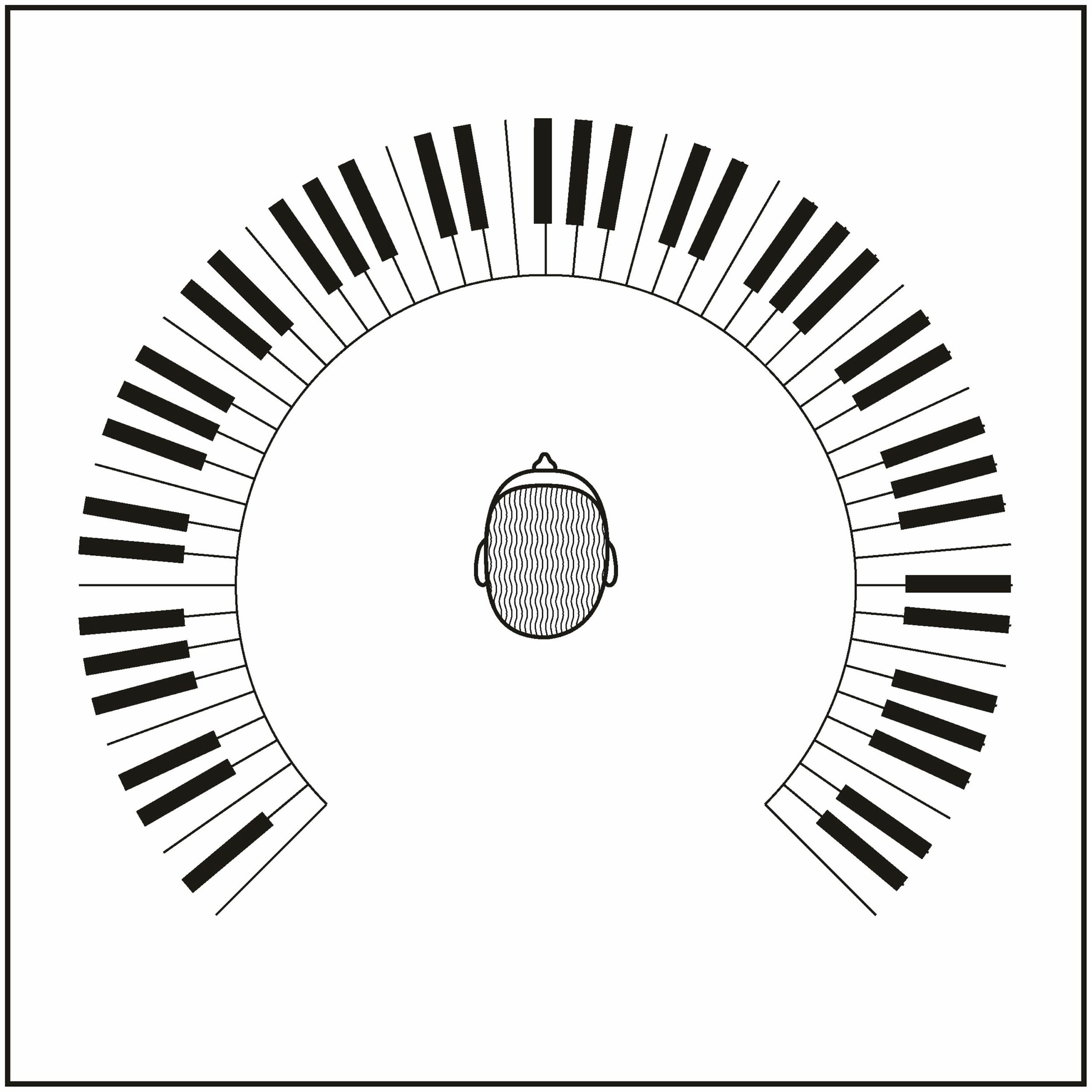
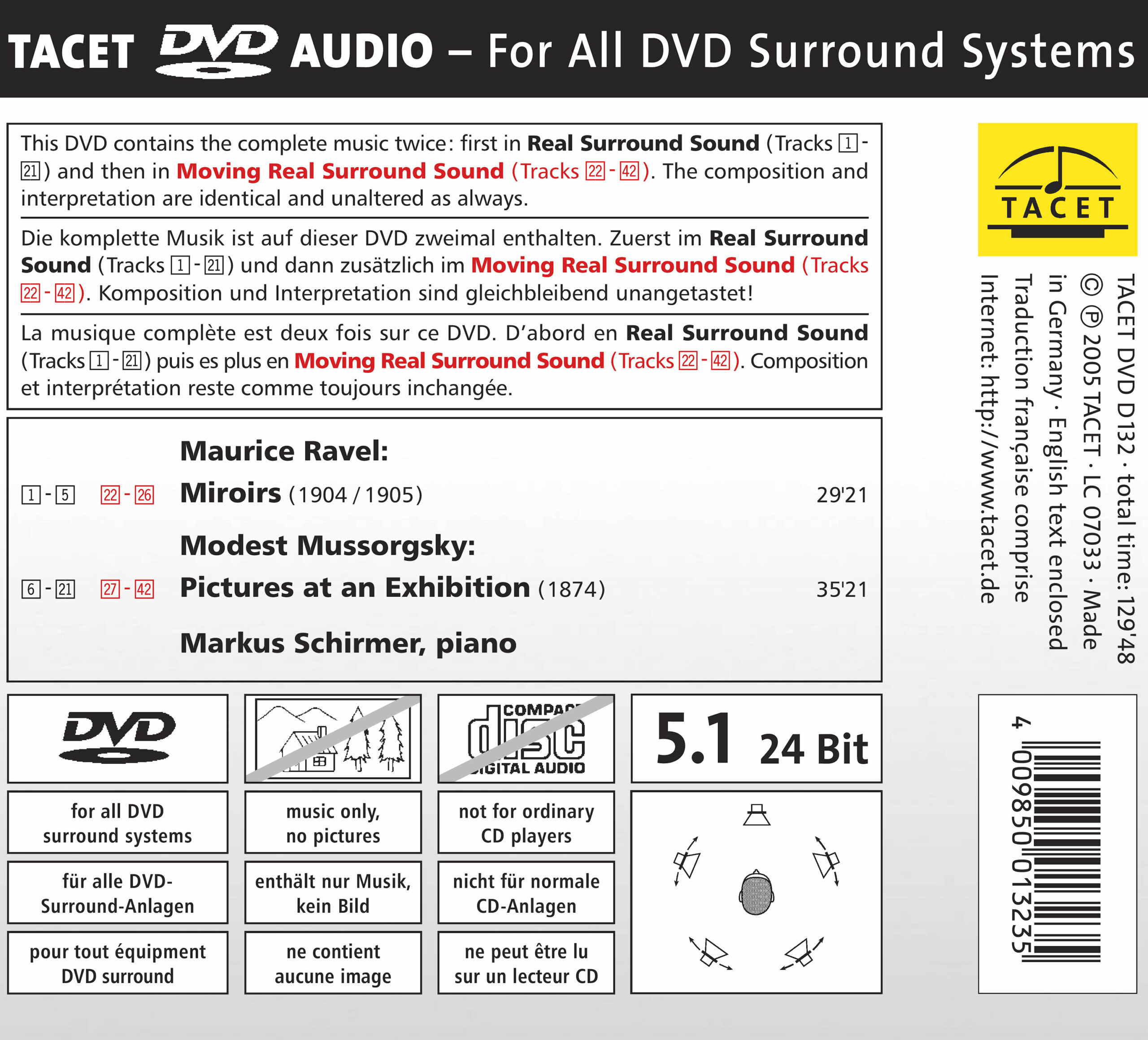
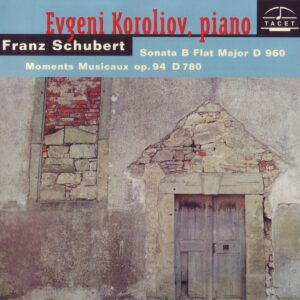
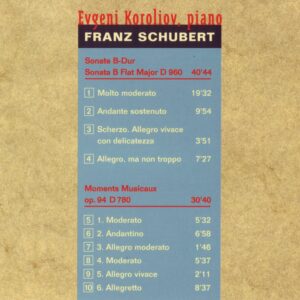
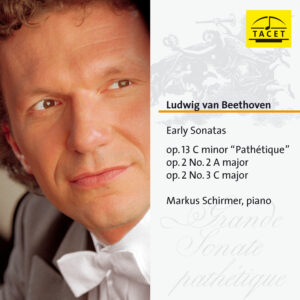
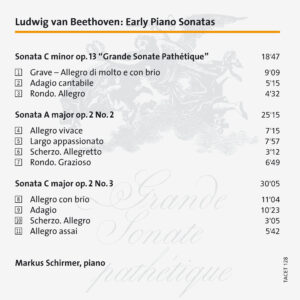
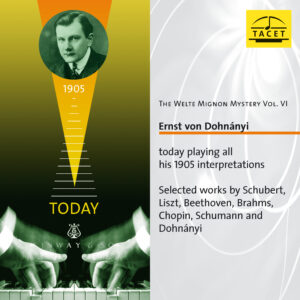
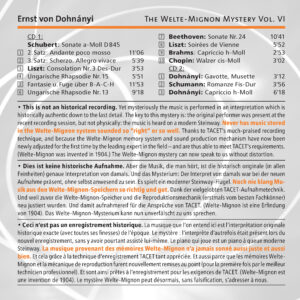
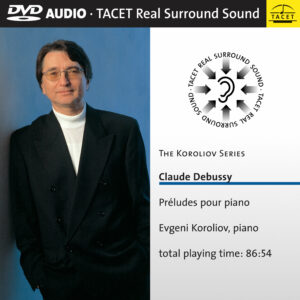
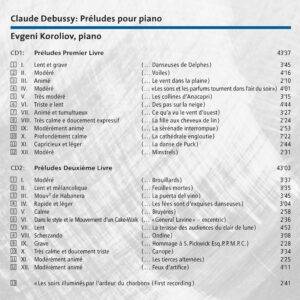
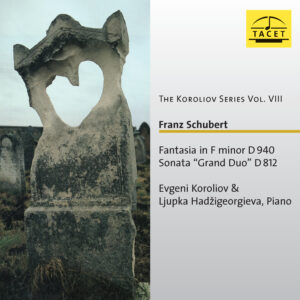
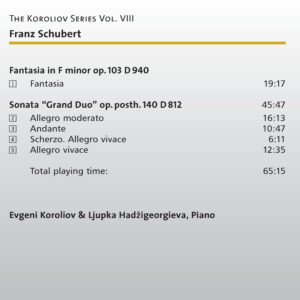
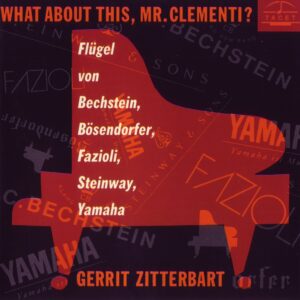
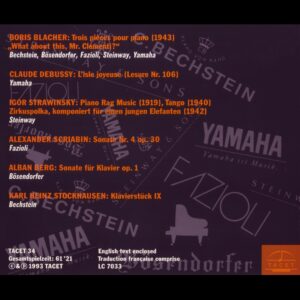
Jean-Marc’s Multi-Channel Recordings Reviews –
I have a confession to make. The piano is not my favourite instrument. This king of instruments has always left me with a feeling of coldness, of something impersonal. The lack of legato and the fact that the sound color itself is not produced by the musician prevents me from fully connecting to the music. I have to assume my own contradiction since I appreciate the harpsichord better although this instrument is even more limited because the player touch does not directly change the volume of the note.
From an audiophile point of view, I often hear people say: “the piano is the musical instrument hardest to reproduce on a sound system”. I understand that the power of the instrument and the initial transient at the beginning of the attack on a note is a good challenge. But personally the complexity of the sound of a violin, the warmth of a human voice or the velvety playing of Karl Leister my favourite clarinet player (of course this was my instrument) are better sound tests. I think that for many the piano is their favourite instrument and they have many piano recordings and whatever they know best is good to evaluate the quality of an audio component.
So for me the arrival of a piano recital on a DVD-Audio of TACET was less of a test for my sound system than a personal test to see if a TACET recording would help me enter more completely in the pianistic universe.
Effectively I had no problem to appreciate this recording. The clarity and dynamic of this DVD-A really makes easy to hear, feel and appreciate all the work of Markus Schirmer our pianist. In particular two things stand out: The first one is the feeling of resonance of the whole piano in particular at the end of a musical sentence. The second is the higher notes, there is no harshness and each note is like a pearl. I like to play this recording at relatively high volume to hear the sharpness of attack and the power of the lower notes.
Like any TACET multi-channel recording, the listener has a very good idea of the recording venue acoustic signature and in this case, this is probably an ideal location of a solo piano recital. A good example is the beginning of “les oiseaux tristes” which starts by 2 long high notes that dies slowly. We hear very well a series of reverberation of the note that disappears without loosing the clarity of the original sound.
My hesitation on the sound quality is not about frequency range or dynamic but about the lack of realism in the acoustic presence of the piano itself. Instead of a standard presentation where the piano would clearly be in front (maybe just forward compared to the front speakers) the sound can arrive from every sides. For example again in “les oiseaux tristes” after the start where the high notes come from the front, then some notes in the lower register come directly from the rear. This is very nice and I can appreciate the soundscape but I would have preferred a more standard presentation of the piano.
In other words I would have liked a more focused physical presence of the piano at a clear location in my room. I tremendously like the aggressive use of the surround speakers by TACET, but in general the presentation of each instrument is very life like, it is the spread of the overall ensemble that is surround. Here it is the sound of the single piano that is itself spread around.
Although I have reservation, this choice still has some obvious benefit. In the passages where the music is faster and must offer a feeling of movement like the long arpeggios of “une barque sur l’océan” the effect is stunning. The sound moves from high to low, front to back, left to right and creates a strong sense of movement of going up and down the water. This is a good match between the musical material and the unusual sound presentation.
The famous Pictures at an Exhibition by Mussorgsky are available in two version qualified (in the usual TACET fashion) of ‘real surround” and “moving surround”. But in this case I feel both versions are moving surround in the sense that the sound of the piano is traveling around in both cases. The second version starts by being similar to the first version and showing a closer perspective of the piano. But in the later tracks the presentation becomes completely crazy. I am certain many listeners will hate the second version. I find it very stimulating, particularly if it is taken with a touch of humour. But classical audio is becoming so conservative that anything to out of the rigid norm is not tolerated.
So I like the « normal » piano version as much as the « crazy moving real surround » version, and the piano version trounce the orchestral version 12 to 3 (at my own surprise!). Of course this was just a game, but it did permit me to explore this music and for that I am once more happy for a great TACET DVD-A.
Jean-Marc Serre
Klassik heute –
The CD recording—already praised for its pianistic and musical excellence—is now being offered by Tacet as an audio DVD. In two variants, listeners can experience Schirmer’s distinctive, memorable interpretations of the Russian cycle of images and reflections, performed on a remarkably resonant Fazioli instrument. Ravel’s Miroirs are presented in "Tacet Real Surround Sound," while the Pictures are additionally offered in "Tacet Moving Real Surround Sound." Compared to the "normal" stereo version (Tacet 132), the listener is placed in an acoustic listening position as if surrounded by the piano—not necessarily a natural position, since, as we all know, the sound source doesn’t orbit around the living room.
Yet the result is far from shabby; it creates a unique musical experience, one that—given its intentions and sonically suggestive effects—doesn’t conform to the bourgeois norms of conventional listening pleasure. Anyone equipped with the necessary number of speakers and a sophisticated home setup will not regret immersing themselves in Schirmer’s Franco- and Russophile musical feats—so to speak, enveloped in sound.
Peter Cossé
Audiophile Audition –
Tacet is known for their highly individual approach to classical discs, but this one ups the stakes even further. First the pairing on a disc of the original piano version of Mussorgky′s 11 pictures with Ravel′s five "pictures" is I believe a first, and very creative programming. Second, it′s a DVD-A and we seem to seeing many fewer of that format lately. Next, pianist Schirmer is a most exciting performer who has appeared around the world and made many recordings. And he plays one of the concert grand brands which have been showing up on recent recordings as alternatives to the previously standard Steinway - a richly-toned Fazioli. And it is positioned in Listhalle in Graz, Austria - a hall of fabulous acoustics for this purpose. Schirmer has been complemented by reviewers on his humorous and inventive nature. Perhaps that is why he agreed to the very unusual Tacet recording approach on their multichannel recordings - spreading the various instruments around the listener, often one instrument to a channel.
But you say we′re only talking one grand piano here, right? Well, there′s the rub: Recording engineer Andreas Spreer has placed the listener INSIDE the piano by directing the lowest notes to the left rear surround, the highest to the right rear surround and the middle frequencies across the frontal three speakers. Such a proposal would send most concert pianists running, but Schirmer already recorded a disc of early Beethoven piano sonatas for Tacet this way, so he′s not fazed (altho he′s playing a Fazioli). I′ve been one of the few reviewers finding this sonic experimentation refreshing and enjoyable. In this case one can really get into Mussorgsky′s colorful collection of tone paintings. The final two sections - Baba Yaga and The Great Gate of Kiev are absolutely exhilarating in this Real Surround Sound approach; never mind that it′s really Unreal. Schirmer′s carefully-crafted performance, as well as the unusual surround sound, bring out details in the piece of which I was never before aware. And I do believe that if this had been recorded on a Steinway instead of the Fazioli I might have had to throw a blanket over my right rear surround speaker to reduce the filling-loosening brittle high notes.
I enjoyed equally the impressionistic Ravel suite which also seemed ideal for this spread-out approach to the piano sound. I could imagine being on a hill above the Valley of the Bells hearing their mournful pealing in the distance.
But now we come to the last and most controversial thing that sets this disc apart: what Tacet calls MOVING Real Surround Sound. Engineer Spreer has done this in previous releases, and always as an optional extra, so if you can′t stand it you can skip it. For example, the entire stereo and nonmoving 5.1 mixes of the Mussorgsky are on tracks 6 thru 21; then tracks 22 thru 37 comprise a repeat of the entire work in Moving Real Surround Sound. Due to the longer length required for repeating some of the music in the different mix all of these discs have been DVD-A rather than SACDs. (Tacet has both formats.)
Earlier Moving Real Surround efforts have often used the gimmick rather sparingly: having the clarinet in Peter and the Wolf fly around the listener since the instrument represents the duck, etc. This time around things get a bit more freaky: Not only are the piano sounds spun around the room, sometimes even on a note-by-note basis, but other manipulation such as reverberation, phasing and even the deliberate addition of wow and flutter are used. Sorry, I felt this was now going too far, but some may like it.
John Sunier